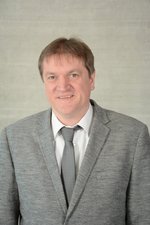More and more cities are becoming smart cities. Big Data applications and analyses serve as tools. This is because the evaluation of big data streams promises better decision-making aids in the urban planning process - in energy management, mobility planning or risk management for fires and flood scenarios. A basic prerequisite is that the data potential is exploited. Researchers Prof. Dr. Volker Coors and Thunyathep Santhanavanich present solutions here.
Berlin is doing it, Cambridge and Helsinki are doing it too. They are talking about the use of so-called 3D city models, which all three cities are relying on. And not only them. A growing number of cities are relying on intelligent and at the same time digital geographic maps, for example, to display individual buildings in three dimensions and to store a wealth of data. The basis for this is provided by the CityGML building model. But this data basis is usually not sufficient with regard to smart city developments. For cities and communities Tto actually become smarter, additional data is needed for cities and communities. Countless Internet-of-Things (IoT) sensors and objects - found in devices and systems - serve as an important data resource. These data sources need to be collected and integrated into 3D city models in a meaningful way.
The research question posed by the two geoinformatics experts Coors and Santhanavanich from HFT Stuttgart is: How can different sensors or IoT systems efficiently connect to smart cities platforms and exchange their data? Because the challenge is that there are different systems of sensors or IoT systems. Almost every device manufacturer uses the sensors differently in terms of data formats and transfer, as well as in the data protocol. "To deal with this problem, it is important to use a standard specification that allows data to be handled efficiently," emphasizes Volker Coors. And Thunyathep Santhanavanich adds, "Another challenge is that the data streams from IoT devices or sensors are growing enormously." These mountains of data need to be cleaned or processed. Volker Coors: "Only if there is a standardized solution will the data will be of real value in terms of usability and efficiency."
IoT data and the linked benefit
Internet-of-Things(IoT) data is also relevant to urban infrastructures and control systems. One example of how data could be usefully linked is a fire detector. This is able to locate the source of the fire via an IoT sensor in the building. This data could be combined with data in the CityGML model - such as on the building material and materials of the hallway. In addition, there is further data on the number of people in the building, which in turn is generated by another sensor or an IoT system. The effect: The fire department has information that can save lives shortly after the alarm is raised.
HFT scientists close research gap
The two scientists are filling a research gap here and have developed the CityThings concept, a data architecture for connecting Internet of Things systems or sensors (IoT, Internet of Things) to the 3D City model. To do this, researchers have improved access to the 3D City model from IoT data streams via a standardized API interface, increasing data usability and efficiency. Their approach helps to connect sensors or IoT systems to the 3D city models that are the basis for most smart city platforms. The "SensorThings API" in particular comes into question as a suitable interface. This is used in the public sector to evaluate geodata - for example, by municipalities or in European Commission projects. The SensorThings API also serves as a standard for setting up Covid 19 case monitoring systems, for example.
Case study Smart Village Wüstenrot
HFT researchers tested the CityThings concept using data in the community of Wüstenrot. The municipality in the Heilbronn district, with a population of around 7,000, is on its way to becoming a plus-energy community. That means: a smart village with different and at the same time sustainable systems. T. Santhanavanich and V. Coors integrated data from solar energy sensors of public buildings in Wüstenrot as well as data from the agro-thermal system and weather data on the community's Smart Village web platform. The two researchers hope the integration of CityThings will provide insights into data from solar panels and the agro-thermal system in Wüuestenrot.
For their future work, the HFT researchers plan to develop more app functionality for further data analysis. These include energy potentials, heating needs, and renovation suggestions to increase energy efficiency. And that will make CityThings a trailblazer for the smart city of today and tomorrow.
![Cityscape with connecting dot technology of smart city conceptual [Image: Adobe Stock/stnazkul]](/fileadmin/Dateien/Forschung/_processed_/d/3/csm_AdobeStock_230291089_3868470cb5.jpeg)
![Managing IOT data in Smart Cities [Image: T. Santhanavanich]](/fileadmin/Dateien/Forschung/_processed_/5/9/csm_slide2_8b1da4793b.jpg)
![City Things conecpt [Image: T. Santhanavanich] City Things concept](/fileadmin/Dateien/Forschung/_processed_/5/e/csm_slide3_e0a0629eeb.jpg)
![City Things: System Architecture [Image: T. Santhanavanich]](/fileadmin/Dateien/Forschung/_processed_/1/f/csm_slide4_6415051634.jpg)

